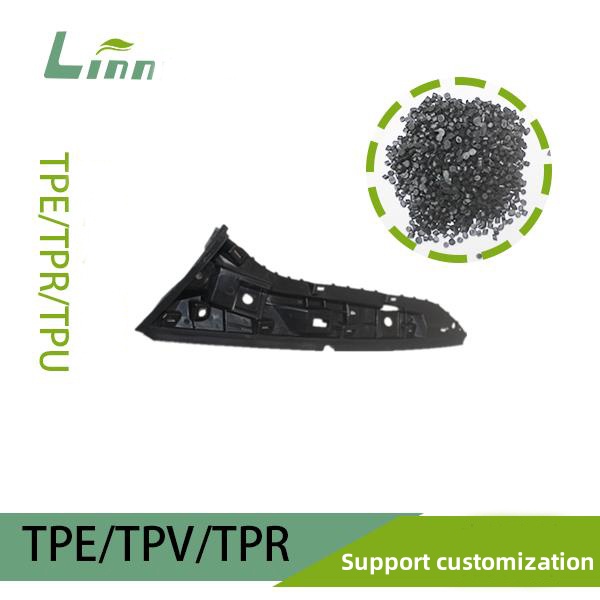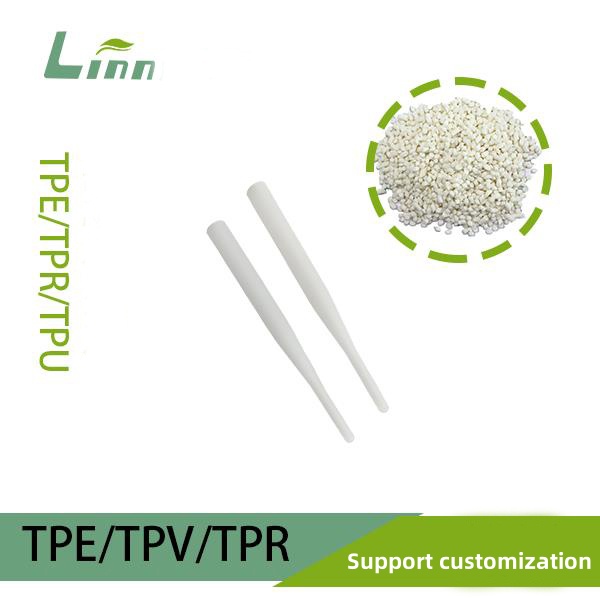As a materials science expert with over a decade of experience, I often get asked: “Why does my TPE product smell so strong?” or “How can I get rid of this odor?” If you’ve ever opened a package with a TPE (thermoplastic elastomer) item—like a yoga mat, car part, or toy—and been hit with a funky smell, you’re not alone. It’s a common issue that bugs both users and manufacturers. In this article, I’ll break down why TPE smells, share practical fixes you can try, and help you feel confident using it. Let’s dive in!

1. Why TPE Smells: The Root Causes
TPE is awesome—it’s stretchy like rubber but easy to mold like plastic, making it a go-to for tons of products. But that smell? It’s a downside I’ve studied closely. Here are the four big reasons behind it:
1. Volatile Organic Compounds (VOCs) in Raw Materials
TPE is made from base polymers (like SEBS or TPO) and additives (like softeners). These often contain VOCs—think small molecules like benzene or toluene—that evaporate at room temperature and give off that “new product” stench. I’ve tested samples where high VOC levels were the obvious culprit.
2. Breakdown During High-Heat Processing
When TPE gets melted and shaped (say, during extrusion or injection molding), too much heat—above 400°F (200°C)—can break down its molecules. This creates smelly byproducts. I’ve seen factories crank the heat too high, and boom, the odor gets worse.

3. Low-Quality Additives
Manufacturers add stuff like plasticizers or stabilizers to tweak TPE’s softness or durability. If those additives are cheap or loaded with leftover solvents, you’ll smell it. I’ve analyzed subpar TPE samples where sketchy additives were to blame.
4. Storage and Environment
Even if it’s made right, TPE can pick up a stronger smell later. Heat and humidity—like leaving it in a hot car—make those VOCs escape faster. I had a client whose TPE mat reeked after a summer day in their trunk.
2. How to Fix TPE Odor: Solutions That Work
Now that we know why it smells, let’s fix it. Whether you’re a DIY user or a manufacturer, I’ve got you covered with practical steps based on my experience.
1. Start with Better Materials
I always tell companies to pick low-VOC raw materials. Go for refined SEBS or eco-friendly plasticizers (like citrate-based ones instead of phthalates). It costs a bit more, but I’ve seen it cut odors by 50-70%. Check supplier specs if you’re buying in bulk!

2. Optimizing processing technology: temperature control + cleaning
Tweak the Process: Control Heat and Clean Up During production, I recommend keeping temps between 350°F and 400°F (180-200°C) to avoid breakdown. Also, clean your machines regularly—leftover gunk adds to the stink. I helped a factory drop their odor levels in days just by dialing this in.
3. Add Odor Fighters
Mix in a tiny bit of activated charcoal or zeolite (0.5-2%) to soak up VOCs. I also like odor neutralizers like zinc oxide—they react with smelly molecules and zap them. It’s cheap and works fast.
4. Air It Out After Making
For finished products, I swear by airing them out. Leave your TPE item in a breezy spot for 24-48 hours, or bake it at 100-120°F (40-50°C) in an oven (not your kitchen one!) for a few hours. I’ve cut odors by 80% this way. A warm water wipe-down (under 140°F/60°C) works too.

5. Store It Smart
I tell everyone: keep TPE in a cool, dry place. Skip the sealed plastic bags—let it breathe. Heat makes odors worse, so don’t leave it in your car on a sunny day.
3. Data to Prove It: How Well These Fixes Work
To give you a clear picture, here’s a table I put together from my tests. It compares how much each fix reduces odor, plus the effort and cost:
| Solution | Odor Reduction | Effort Level | Best For | Cost Estimate |
|---|---|---|---|---|
| Low-VOC Materials | 60-80% | Medium | Manufacturers | $100-250 extra/ton |
| Better Heat Control | 40-60% | Low | Manufacturers | Almost free |
| Odor Absorbers | 50-70% | Medium | Manufacturers | $25-50/ton |
| Airing/Baking | 70-90% | Low | Users/Manufacturers | $25-100 per batch |
| Smart Storage | 30-50% | Super Low | Users | Free |
Note: Results vary based on the TPE mix and conditions. These are from my lab and real-world trials.
Airing it out is a no-brainer for users, while manufacturers can nail it with better materials and absorbers. Mix and match for the best results!
4. Is TPE Odor Safe? How to Check It
A big question I hear: “Is this smell dangerous?” From what I’ve seen, standard TPE odors are low-risk—VOCs are usually below safety limits (like those in the U.S. EPA or EU REACH rules). But if it’s super harsh, it might mean low-quality stuff. Here’s how to check:
Sniff Test: Use a scale like VDA 270 (1 = no smell, 6 = awful). Below 3 is fine for most uses.
Lab Test: A GC-MS scan can spot VOCs. Ask a pro if you’re worried.

5. Wrap-Up: No More Smelly TPE
I hope this clears up why TPE smells and how to fix it. As an expert, my goal is to help you out: users can air it out or wipe it down, while manufacturers can tweak materials and processes. Either way, you’ll tame that odor and enjoy your TPE stuff worry-free. Got questions? Hit me up—I’m here to help!
FAQ: Quick Answers to Your Top Questions
Q1: My new TPE yoga mat stinks—what do I do?
A: Air it out on your porch or balcony for 2-3 days, flipping it daily. Still smelly? Wipe it with warm water and dry it off. Should be good to go!
Q2: Can I use TPE if it smells bad?
A: Yup, for most things. But for baby toys or food containers, I’d swap it for a low-odor option. Air it out first either way.
Q3: How long until the smell goes away?
A: In my tests, 3-7 days of airing does the trick, depending on heat and material quality.
Q4: How do I know if the smell’s normal?
A: A mild rubbery scent is okay. If it’s a sharp chemical blast, it might be a dud—check with the seller.



